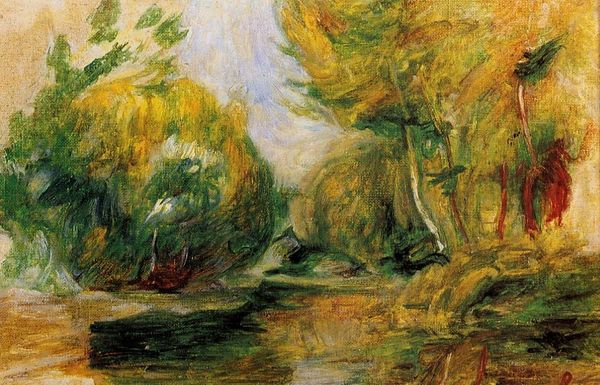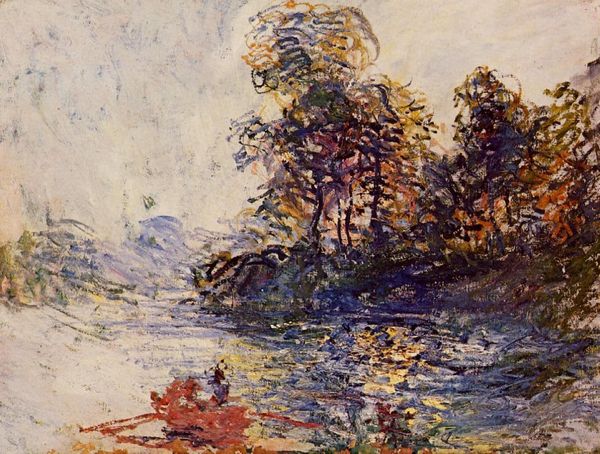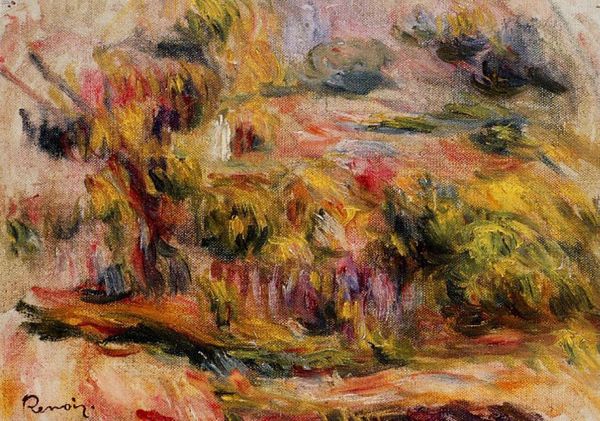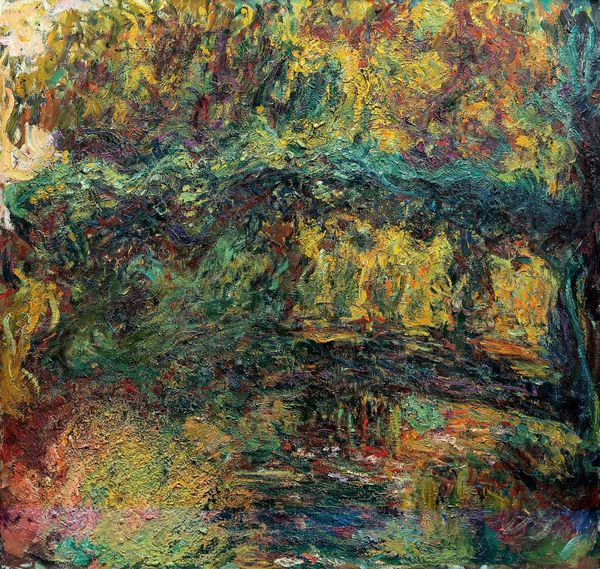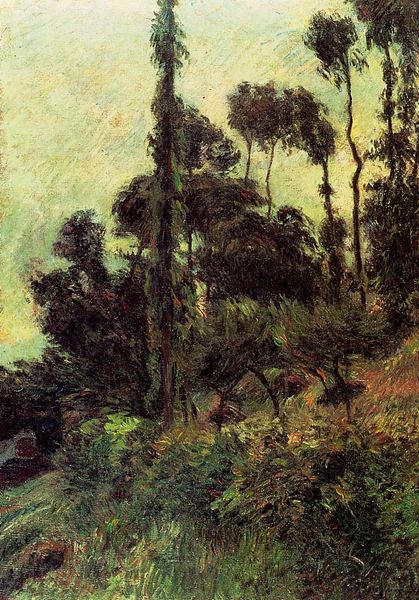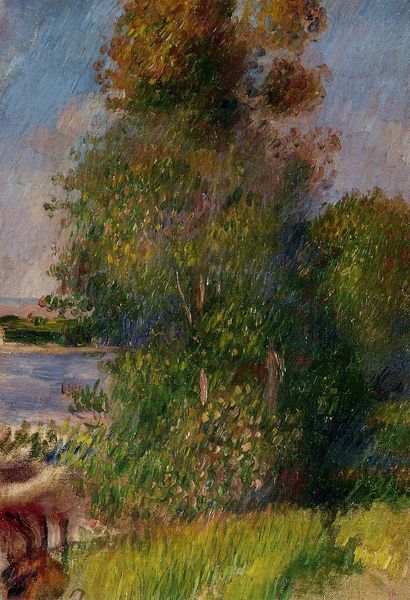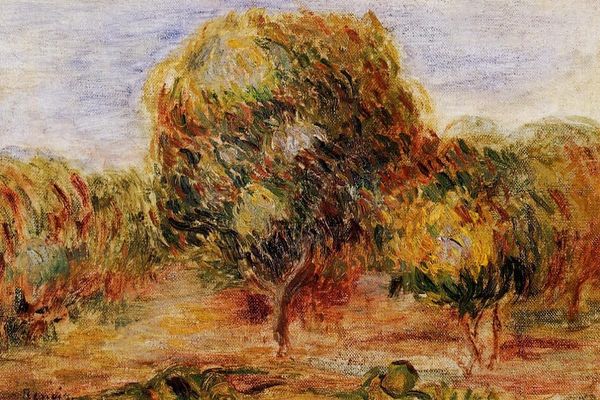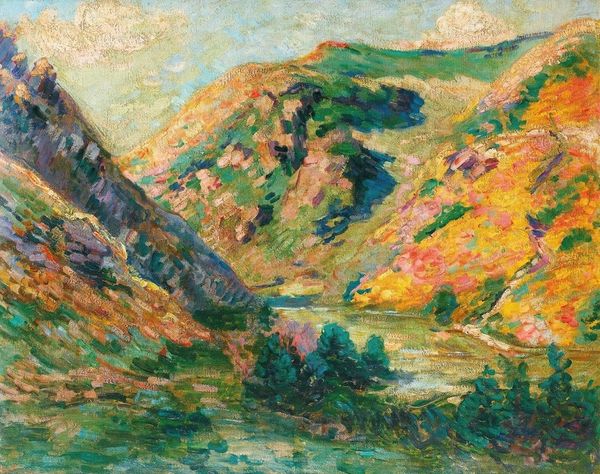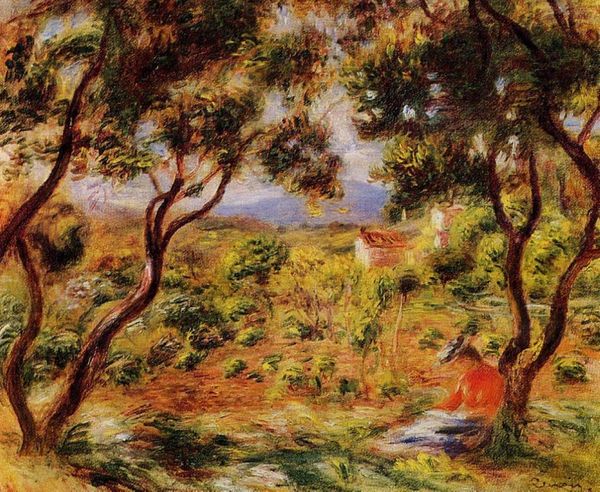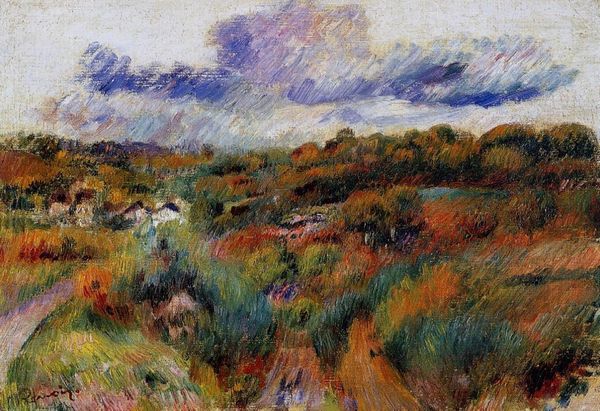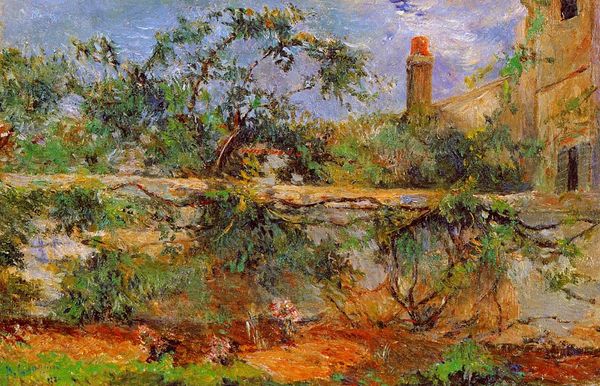
Copyright: Public domain
Editor: Here we have Paul Gauguin's "Mountain Landscape," painted in 1882, using oil on canvas. The colors are so rich and earthy, and there’s this unusual cloud formation. What do you make of the composition of this piece? Curator: The first thing that strikes me is the rugged materiality. Notice the impasto application of paint. Gauguin’s expressive brushstrokes give an undeniable textural depth, lending a structured energy to the terrain. What function might the colour choices have in your opinion? Editor: It's like the reds and browns create a kind of contained drama, but I'm not quite sure what it means. Curator: Consider the weight that tone lends in directing your eye; see how the earth tones build a compositional rhythm, moving upwards toward that intriguing clouded apex? It's a compelling exercise in structuring pictorial space through chromatic intensity. How might we read that sky? Editor: It's so heavy, it’s a counterpoint... suggesting, maybe, a latent unease disrupting the conventional tranquility we associate with landscape paintings? Curator: Precisely. It pushes against a simple mimetic reading, doesn't it? Observe the formal relations -- color, shape, and texture -- carefully. What sense do you derive of Gauguin's feelings, decoded only from the image itself? Editor: This examination is really making me reconsider how a landscape can be more than just scenery, it has become an exploration of form and material and how the arrangement influences us. Thank you! Curator: Indeed. Focusing on these formal elements allows a deeper aesthetic apprehension, moving beyond representational concerns into the expressive core of the work.
Comments
No comments
Be the first to comment and join the conversation on the ultimate creative platform.
